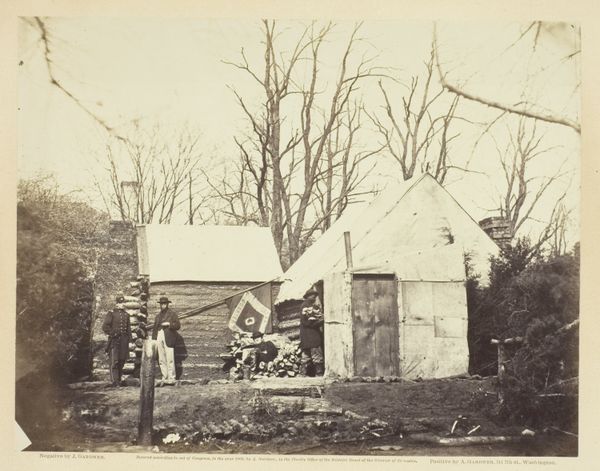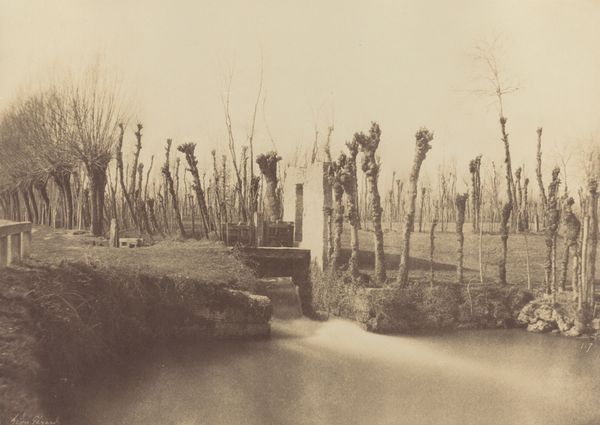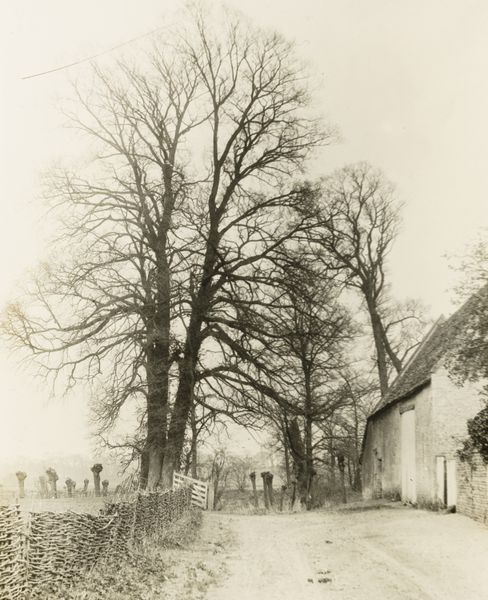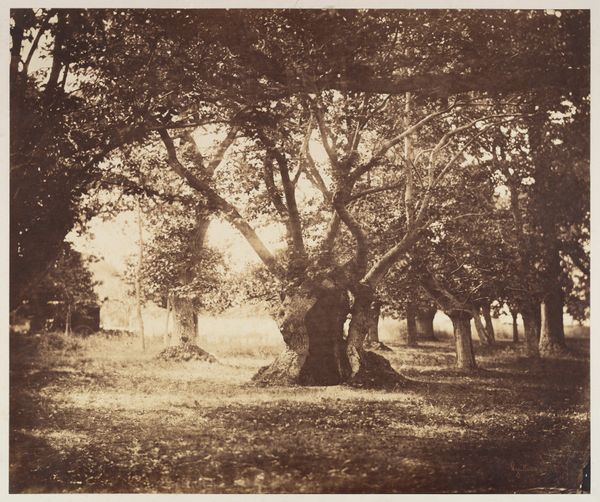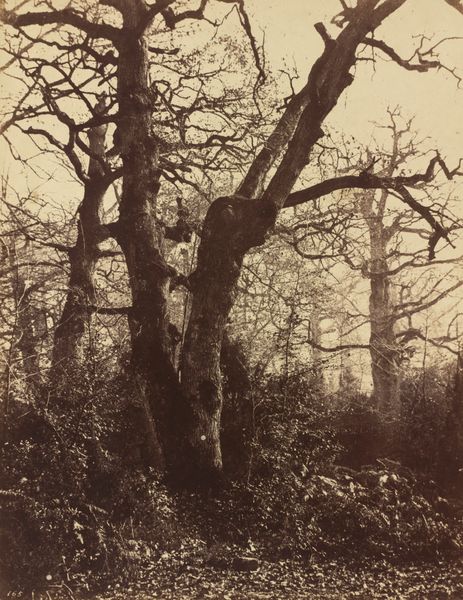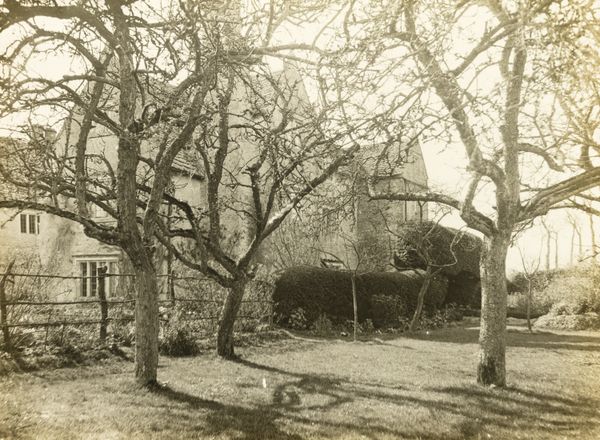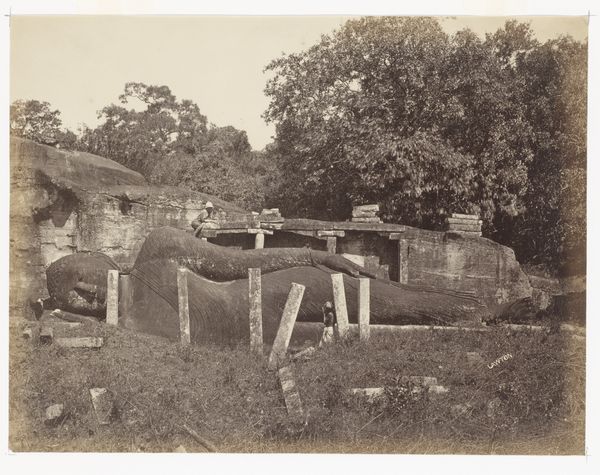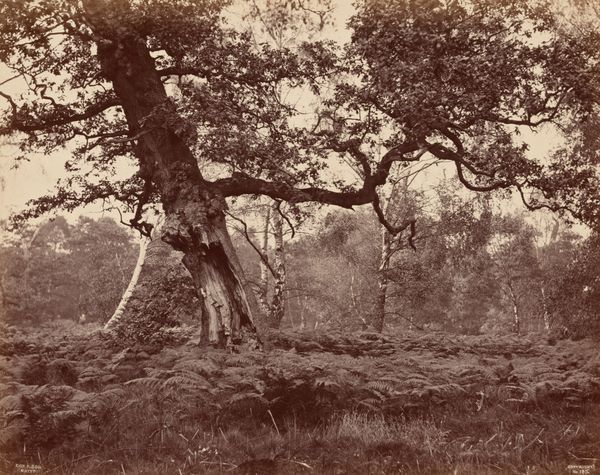
Dimensions: image: 21 x 26 cm (8 1/4 x 10 1/4 in.) mount: 26 x 36.1 cm (10 1/4 x 14 3/16 in.)
Copyright: National Gallery of Art: CC0 1.0
Curator: This gelatin-silver print, taken circa the 1850s, is titled "Old Tree near Chatham." Editor: The tree has an undeniably ghostly presence. The skeletal branches against the muted sky really enhance its formidable stature. Curator: This photograph emerged at a fascinating juncture. It speaks volumes about photography’s evolving role in documentation, particularly in representing nature, think of Romanticism and the sublime as precursors to these representations. Consider also the politics of land and ownership intertwined with representing rural scenes during the Victorian era. Editor: Visually, the print is all about contrasts: the rough, gnarled texture of the tree against the relatively smooth surface of the overcast sky, the defined fence versus the blurred backdrop. Curator: Photography allowed for broader circulation of these rural and pastoral views to an urban public increasingly distanced from the countryside, subtly shaping perceptions. Editor: It is the tonality that truly defines the photograph’s somber and subdued character, creating depth through the gradations of gray. Curator: Indeed, early photography, unlike painting, held a certain veracity and authority. How might that perceived "truth" have bolstered specific narratives regarding rural life and the natural world? Editor: The artist makes use of natural geometry too; notice how the angles formed by the supports of the well play against the verticals in the fencing, drawing our eyes back into the plane, towards the trunk. Curator: Early photography served as a potent tool for social commentary. It created avenues to reflect and critique socio-economic disparities as well as land ownership during the mid-19th century. Editor: Agreed; though what really struck me initially were these raw aesthetic contrasts! But your insight makes me think of the social implications more deeply. Curator: Exactly. Examining these details can unveil profound elements about the social landscape and contextual significance. Editor: A great conversation. Focusing both on the object, its inherent aesthetic, and how context shifts and deepens our interpretation.
Comments
No comments
Be the first to comment and join the conversation on the ultimate creative platform.
